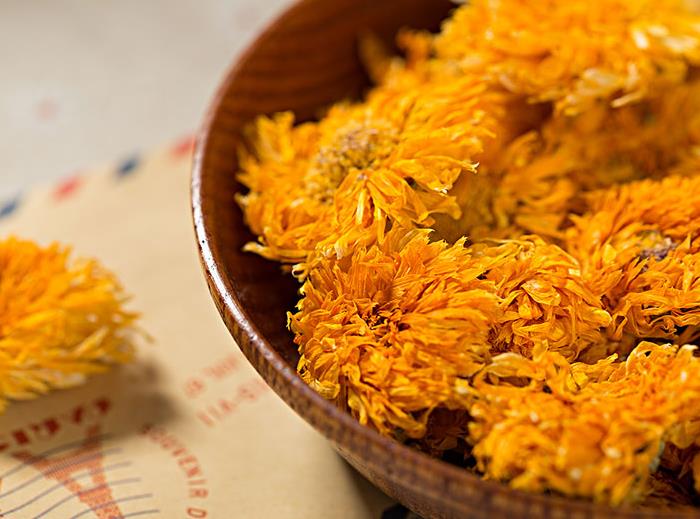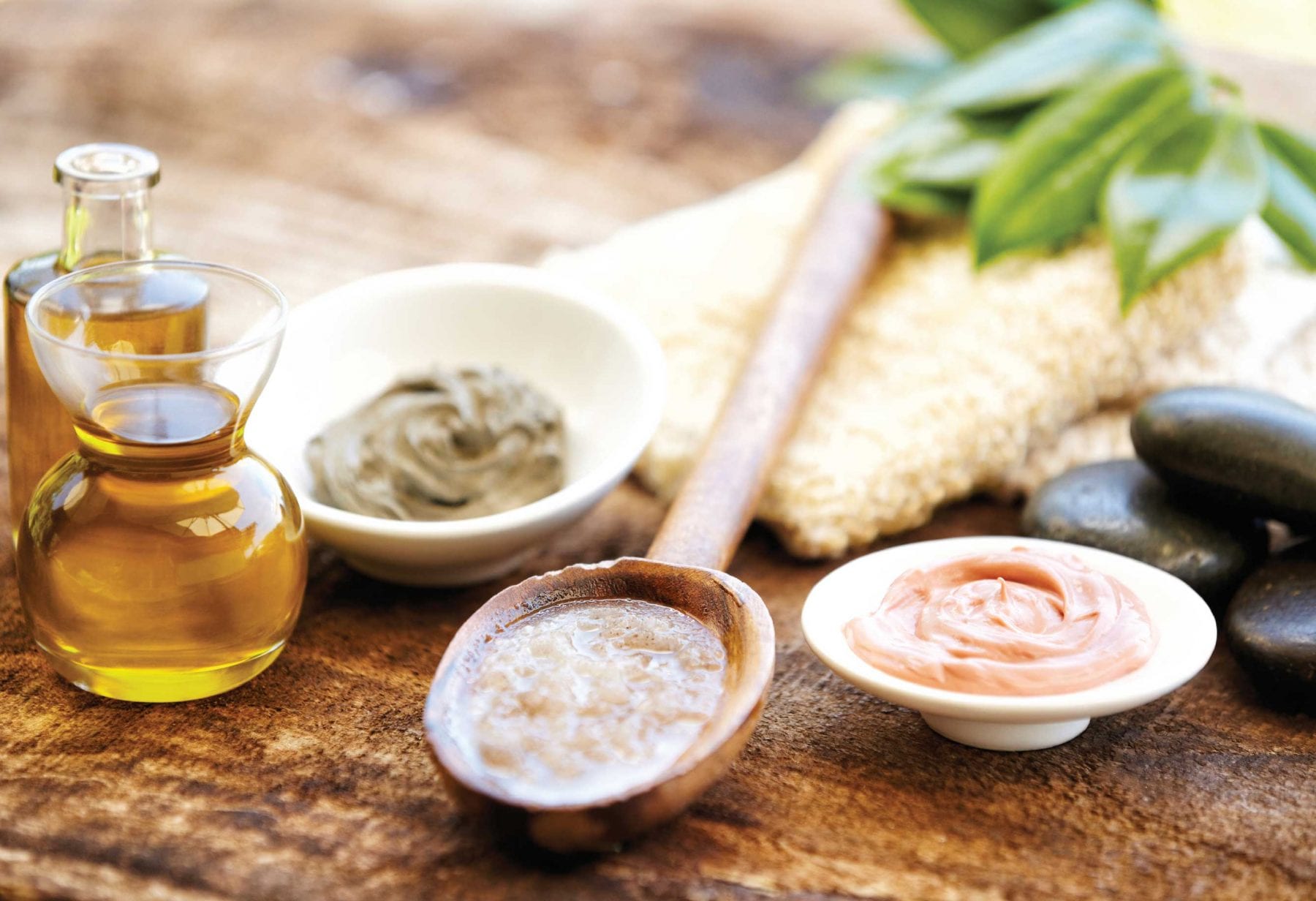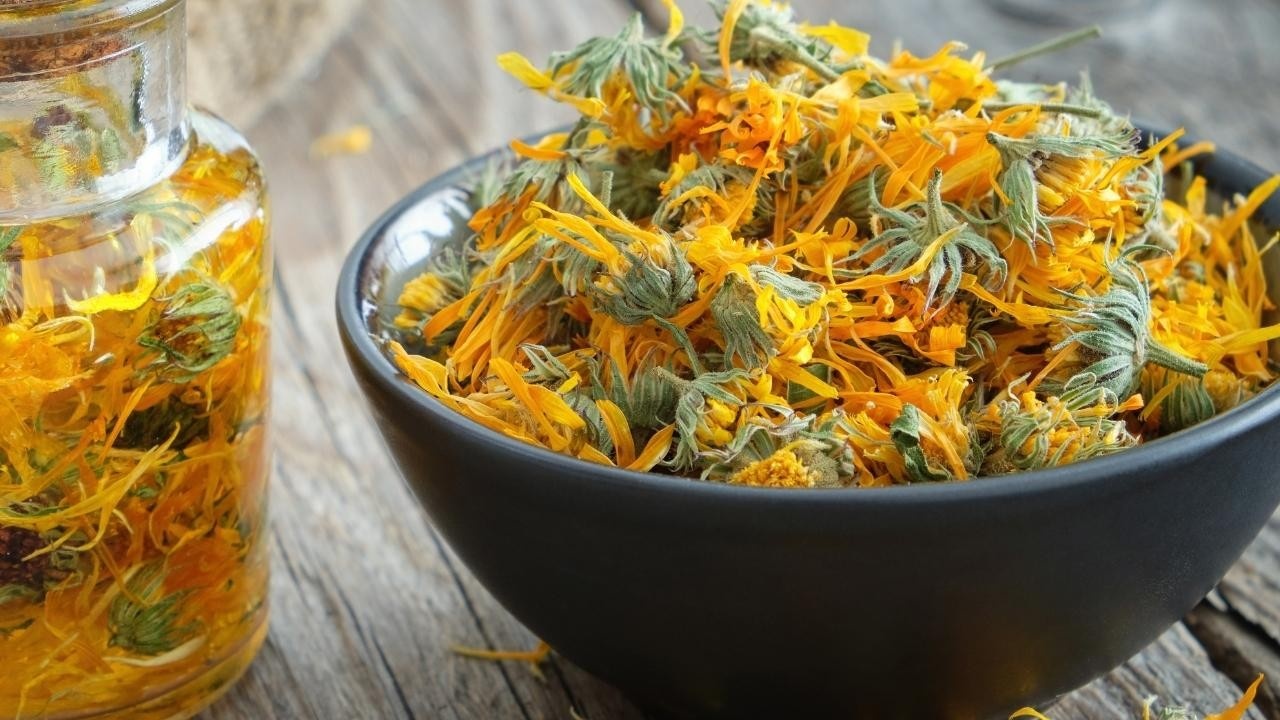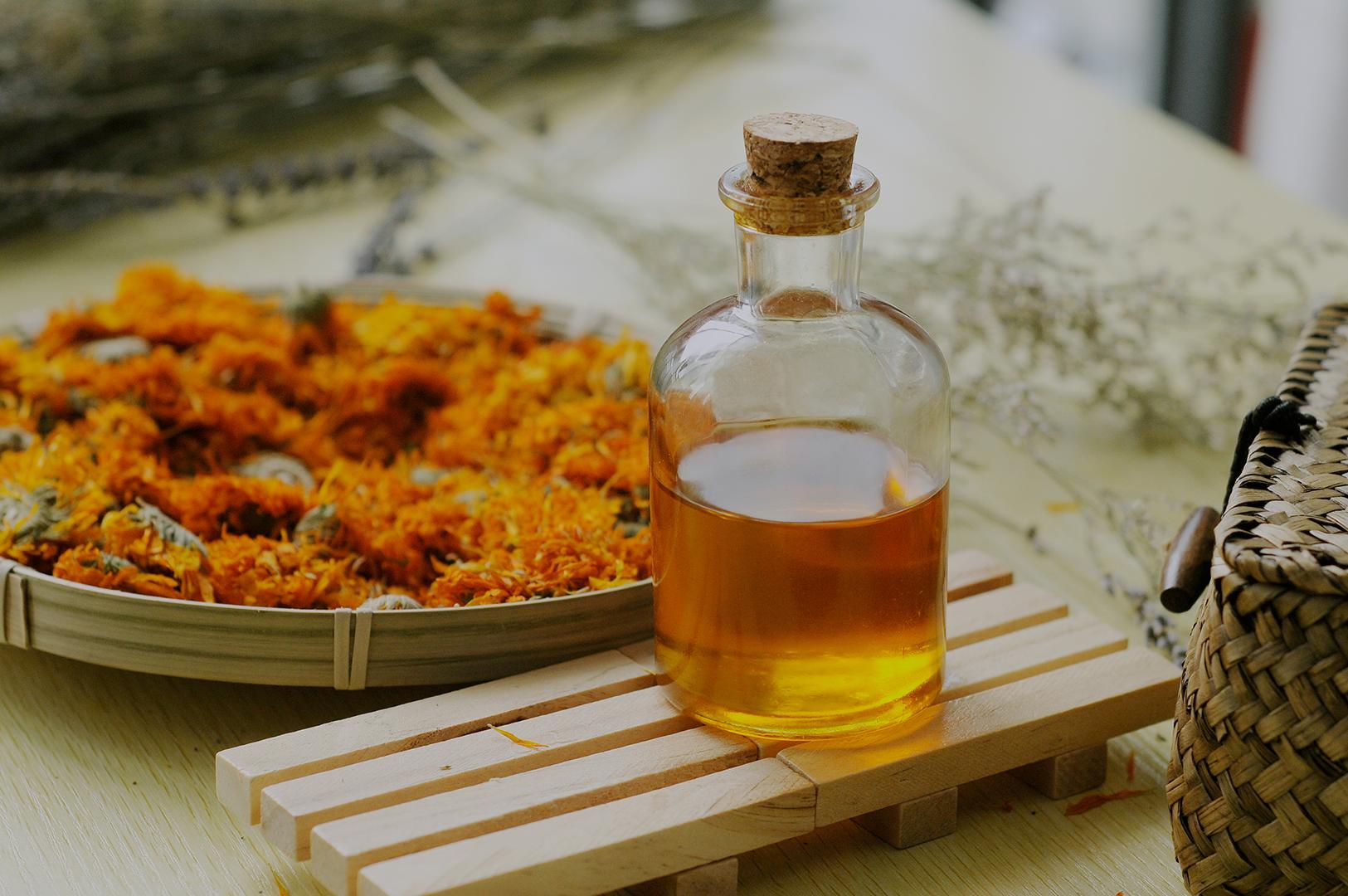Calendula oil is obtained from Calendula officinalis, a plant in the genus Calendula of the Asteraceae family. As is well known, the Asteraceae belong to the Angiospermae family of flowering plants, which is rich in resources and diverse in species, with approximately 1,000 genera and 25,000 to 30,000 species worldwide. According to modern research, the Asteraceae have the highest chemical composition complexity and diversity in the plant kingdom. Calendula is commonly used in folk medicine to soothe the liver, remove heat, dispel wind, and eliminate phlegm. Calendula is rich in natural yellow pigment, of which lutein content reaches 1.6%. Calendula’s yellow pigment is widely used in food, cosmetics, pharmaceuticals, and poultry feed due to its bright color, strong antioxidant properties, non-toxicity, and high safety.
Calendula oil is yellow-green in color and rich in flavonoids and saponins. It has a woody aroma and bitter taste. Since calendula essential oil is difficult to obtain and quite expensive, calendula-infused oil is commonly made by macerating the whole flower in oil. Calendula oil is often used for wound care and sunburn treatment due to its excellent moisturizing, anti-inflammatory, and cell-regenerating properties on the skin, and is effective for acne, frostbite, diaper rash, skin disorders, skin scars, varicose veins, and abrasions, and can be used in creams and moisturizers at 15% to 20%, or by simply adding the pure drug It can be used by simply adding
Calendula’s Legendary Healing Properties

Calendula, also known as Calendula officinalis, has historically been well known for its various healing properties, including the prevention of spasms, anti-inflammatory, prophylaxis of heavy bleeding, hypoesthesia, hemostasis, prevention of trauma, and soothing perspiration. Herbalists have long considered calendula a medicinal plant and have used it extensively in medicine. Calendula is taken internally to treat gastric ulcers, duodenal ulcers, indigestion, gallbladder disorders, amenorrhea, and menstrual disorders. Extracts, tinctures, and decoctions (medicinal wines) of calendula flowers are used as common household remedies for slow-healing wounds, bedsores, bruises, cuts, abrasions, varicose veins, inflamed gums, hemorrhoids, long-term ulcers, and burns.
Calendula and hazelnut combined are thought to be effective in stopping bleeding. This is because both plants contain tannins, which act on skin proteins to cause the skin to shrink and heal. Calendula flowers can be rubbed on bee stings to soothe the sting. Calendula extract is an essential medicine for inflammation of enlarged lymph, sebaceous cysts, and acute or chronic skin injuries. Calendula is also suitable as a mouthwash after tooth extraction.
Ingredients of Calendula Oil

The chemical and physical properties of calendula oil depend on the type and quality of vegetable oil infused in the maceration process. In commercial production, the orange, multi-petaled calendula is most commonly used.
The volatile chemical constituents in the volatile oil and infused oil of Calendula officinalis were analyzed. The main constituents of the volatile oil were terpenoids, with the highest content of α-cadinol, followed by τ-eugenol and δ-cadinene, with the total content of these three components accounting for 67.96 percent of the total volatile oil. Most of the volatile oil components were found in the decoction oil, but the decoction oil contained more long-chain fatty acids, with linoleic acid content at 75.09 percent and oleic acid content at 75.09 percent. Oleic acid content was 75.09 percent, palmitic acid was 10.57 percent, and terpene content was high for δ-juniperene, τ-juniperene, α-juniperol, and α-pinitol. Calendula oil has an elegant and pleasant aroma, and its use in aromatherapy has highlighted its “holistic healing” effects, including skin care, treatment of skin diseases, purification of the mind, and emotional regulation.
Usage of Calendula Oil

- Topical use
Calendula oil has excellent effects on the skin and can be used for varicose veins, venous fractures, bruises, eczema, and cuts. The addition of two to three drops of the appropriate essential oil can enhance the effectiveness of the treatment and improve these and other conditions.
As with other infused oils, calendula oil is more expensive than regular carrier oils, so it is usually blended 25% with other appropriate vegetable oils. When applied topically alone, calendula oil can help with broken facial veins and diaper rash in babies.
- Anti-inflammatory
Calendula oil is often used as an anti-inflammatory treatment. A medicated wine containing 20% calendula has been reported to be very useful in the treatment of chronic otitis media. In addition, one study showed that a lotion containing calendula and other plant extracts was effective against burn edema and severe lymph edema in rats. However, the same study found that the lotion reduced pain caused by lymphedema after mastectomy, but no significant difference was found between the experimental and control groups in human studies.
- Cosmetic Applications
Calendula oil is well known for its efficacy as a formulation in cosmetic skin care, including facial firming. Calendula oil has been shown to be very effective in repairing cracked skin, especially in hand and body products. It is often mixed with 3-10% in oil-based or emulsified cosmetics to cleanse, soften, and soothe the skin. When used in lotions and other products, the calendula plant not only has a gentle exfoliating and soothing effect on the skin, but is also widely used in the beauty field as a softener and moisturizer.
- Blending Creams
Creams made with calendula oil have a beautiful golden color due to its woody, musky aroma. Because of its excellent moisturizing, anti-inflammatory, and cell-regenerating effects on the skin, calendula oil is often used to treat wounds, sunburn, acne, frostbite, diaper rash, skin diseases, skin scars, varicose veins, and abrasions. Creams made with calendula oil have a beautiful golden color and a shelf life of 12-14 months.
How to Make Calendula Essential Oil

Calendula essential oil is usually made by steeping calendula petals in a warm carrier oil (ideally coconut oil, sweet almond oil, jojoba oil, or olive oil), steaming, and filtering. After distillation, the remaining ingredient is calendula essential oil, which should have a golden-orange color. You can make calendula infused oil at home by following the instructions below.
Calendula Infused Oil
Ingredients
- Sun-dried calendula petals
- Carrier oil (olive oil, almond oil, or sunflower oil are best)
- Clean glass jar with lid
- Coarse cotton cloth
Procedure
- Place the chopped and dried calendula petals in a clean glass jar. The ratio of dried petals to carrier oil should be 1:4.
- Pour the carrier oil over the herbs so that they are completely covered.
- Place the glass jars in a yogurt maker or turkey baster (temperature 110 to 120 degrees Fahrenheit) and let stand for 10 days to 2 weeks, stirring once a day. If you do not have such an appliance in your home, try exposing the essential oils to approximately the same temperature.
- After two weeks, strain the resulting oil through a coarse cloth into a clean glass bottle. Press the petals well to squeeze out the essence.
- If you notice more particles mixed in with the oil, leave it overnight and pour out the clear oil. This should filter out any magazines that have settled at the bottom of the container.
- Label the essential oil and store in a cool, well-lit area for one year.
- Homemade calendula essential oil can be used as a body oil after bathing, as a baby oil, or as a home remedy for dry skin, inflammation, and rashes.
Is Calendula Essential Oil safe?

Calendula essential oil is generally safe to use, but we recommend that you follow these safety guidelines and precautions
Pregnant and lactating women should generally avoid using calendula essential oil. Calendula essential oil should never be taken orally due to concerns that it may cause miscarriage. Similarly, topical use of calendula essential oil should also be avoided in these individuals.
People sensitive to ragweed, calendula, aster, daisy, and other related plants may experience allergic reactions. Allergic individuals should consult a physician or undergo allergy testing before using calendula essential oil.
Calendula essential oil may cause excessive drowsiness when used in conjunction with medications during or after surgery. If you have been using calendula essential oil, discontinue use at least 2 weeks prior to surgery.
Side Effects of Calendula Essential Oil
People who are allergic to plants such as calendula, daisy, ragweed, or chrysanthemum should use calendula essential oil cautiously to avoid side effects. In addition, little information is available on the safety of calendula essential oil for pregnant and lactating women. It is always best to consult a health care professional before use, especially for therapeutic purposes.
Remember that sedatives as well as medications for high blood pressure and diabetes may interact with calendula. Using calendula with sedatives, benzodiazepines, barbiturates, narcotics, antidepressants, and even alcohol can cause drowsiness and lethargy. If you want to improve the quality of your sleep, it is recommended that you seek safe and natural ways to ensure restful sleep.





